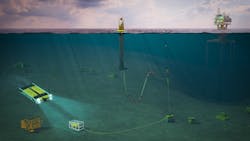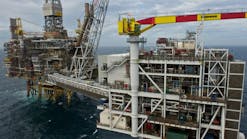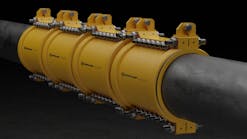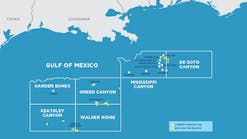Offshore staff
MONROE TOWNSHIP, New Jersey – Ocean Power Technologies Inc. (OPT), Modus Seabed Intervention, and Saab Seaeye are developing a solution for carbon-free subsea autonomous underwater vehicle (AUV) residency.
This system is designed for autonomous offshore operations with the OPT PowerBuoy power and communications platform at its core. Via an integrated mooring and subsea power/data transmission cable, a PowerBuoy can provide carbon-free power to a seabed docking station to recharge an AUV while enabling secure data transmission to and from shore-based operations anywhere in the world.
The autonomous resident AUV system concept has been jointly submitted for US government development and demonstration project funding consideration.
George Kirby, OPT president and CEO, said: “We believe a self-contained system powered by an OPT PowerBuoy and exempt from existing ocean infrastructure has the potential to revolutionize the industrial use of AUVs and make long-term residency a cost-effective reality.
“Modus Seabed Intervention’s experience with advanced technology development efforts in subsea docking with Saab Seaeye’s market-leading hybrid AUV [HAUV] enables autonomous offshore operations and we believe it is a natural fit for our environmentally sound PowerBuoy ocean power and communications technology.”
The ongoing electrification of offshore applications finds underwater vehicles increasingly used for defense and security surveillance, as well as for seafloor mapping and asset maintenance in oil and gas. Increasing the length and variety of missions an AUV can undertake can lower costs and risks, and true autonomous control with access to data in real time is a goal for operators, the company said.
An autonomously powered interactive docking station independent of traditional infrastructure offers efficiency in routine operations and facilitates timely response to ad hoc events (extreme weather, subsea equipment failure) more rapidly than possible with surface-based vessels.
03/10/2020





